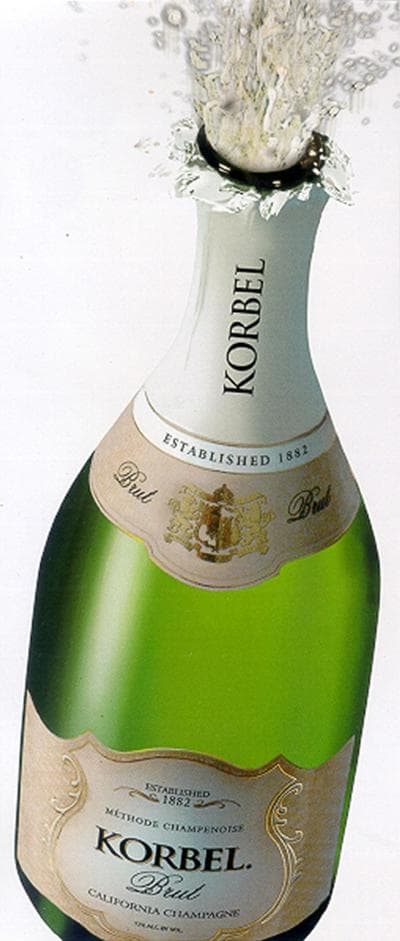Advertisement
Where Does The Bubbly Get Its Bubbles?

The 19th century poet Lord Byron praised champagne bubbles as "foaming whirls, as white as Cleopatra's pearls."
Dom Pierre Perignon, the 17th century Benedictine monk, said champagne was like "drinking stars."
Champagne has always inspired romance, but for hundreds of years, all those bubbles were considered more of a nuisance than a delicacy.
"Winemakers' bottles would be exploding," said Wall Street Journal science columnist Robert Lee Hotz. "Winemaking was quite a hazardous art."
The bubbles are created when yeasts ferment sugars and form carbon dioxide gas, but it wasn't until the 17th century that they figured out a way to keep champagne bottled.
That's when Dom Perignon is credited with pioneering the predecessor of the wire collar, called a muselet, which holds a cork in place to withstand the fermentation pressure.
And researchers now say that microscopic lint in champagne glasses are crucial to the whole process.
"The crucial cradle for champagne bubbles are these tiny microscopic fibers - typically cellulose - left by the towel that you wash the glass clean with," Hotz said.
The bubbles are hollow, and as you pour the champagne into the glass it splashes, and some of the gases start to effervesce. It's trapped in hollow tubes and once the glass starts to settle, the tubes start to bubble at a fixed rate of 30 bubbles per second.
"When the bubbles reach the surface, they explode like a little bubble of lava shooting little jet droplets out into the air at several yards per second," Hotz said.
And each bubble is working to affect the taste, aroma and experience of every sip.
"It's long thought that this tingle you get on your tongue just comes from the physical act of these bubbles popping - like having a little champagne fairy dancing on your tongue," Hotz said.
But the carbonated bubbles actually activate the sour taste receptors. Nobody knows why this happens, since there's no reason humans should have evolved to have a special apparatus for tasting champagne bubbles. It's probably a side effect of our normal taste sensory apparatus.
But whatever the reason, people seem to like it, and are expected to pop millions of bottles of bubbly to ring in the New Year Monday night.
This story originally aired in 2009.
Guest:
- Robert Lee Hotz, science columnist for the Wall Street Journal
This segment aired on December 31, 2012.